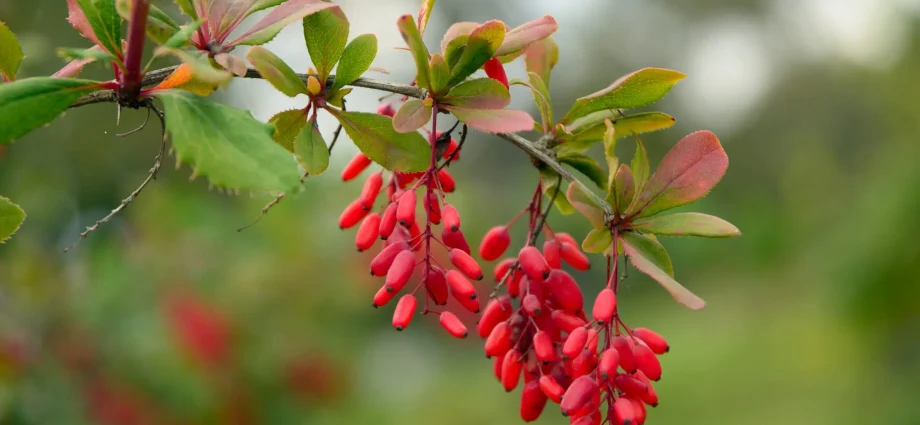Contents
Barberry whole, planted in the garden, will decorate it for many years. The shrub retains its decorative effect for 30-40 years. Caring for him is easy. You can grow it in the suburbs.
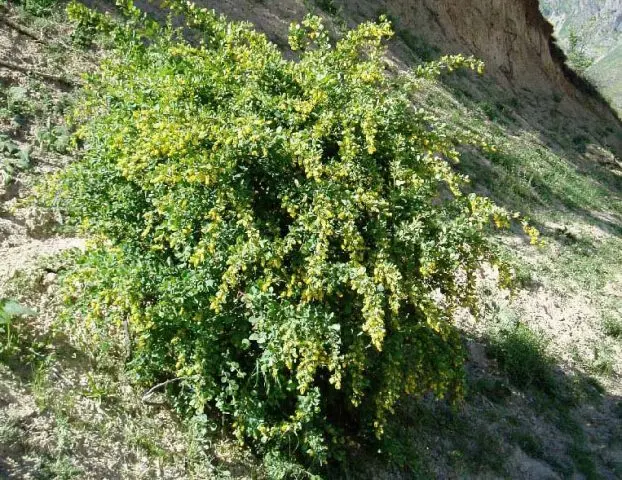
Under natural conditions, it grows in the Crimea and on the Black Sea coast of the Caucasus. In the Leningrad region, it is also planted, but the above-ground part often freezes.
Description of barberry whole
The shrub grows up to 4-9 m. The crown is formed from strong, branching shoots. They are angular, brown or purple. In the lower part of the bush, the shoots are covered with 2-3 separate spines, in other parts of the branch are simple, strong.

During flowering, the bushes of the whole barberry are strewn with axillary inflorescences. The length of the flower brush is at least 5 cm. It is formed from 12-20 yellow flowers with obovate petals.
The surface of the leaves is leathery, the shape is oblong or obovate. The length of the leaf plate is about 5 cm, the width is slightly less – 2 cm. The leaves of young shoots are characterized by a jagged edge. The summer color of the foliage of the whole barberry is blue-green, dark.
By autumn, fruits ripen on the bushes. Their shape is obovate or oblong. The skin is purple-red, there is a slight coating.
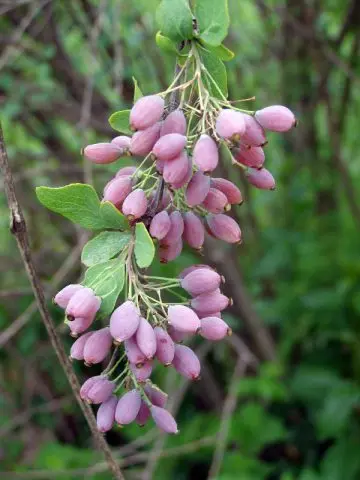
The length of the berries does not exceed 8 mm. The flowering period of the whole barberry falls on April-June. Fruiting continues from September to October. The first berries appear on 8-year-old bushes.
Whole-edge barberry in landscape design
The shrub is used to decorate artificial and natural reservoirs. Whole barberry decorates the coast, protects from erosion and landslides. It is planted along highways, in the park zone of cities.

In country houses, elegant, durable, hedges are grown from Berberis integerrima bushes. The height of the living fence reaches 2,5 m. It protects the site from dust and noise. The shrub tolerates pruning well. The crown can be given any shape. Barberry looks good in group plantings. Planted next to him:
- spirea;
- lapchatka;
- viburnum;
- rose hips;
- euonymus

In group plantings, Berberis integerrima goes well with coniferous trees and other varieties of barberry:
- Tunberga;
- spring ordinary;
- Wilson.
Planting and care
Barberry seedlings with an open root system are planted in the garden in early spring, until active sap flow begins, the buds open. The culture in the container is planted at any time from spring to autumn.
There are no special site requirements. The shrub is not afraid of wind, drafts, partial shade. Bright lighting adds decorativeness to the whole-edge barberry. The color of the leaves from the sun is brighter. Soils are suitable alkaline and neutral. Acidic soils are limed a year before planting.
Seedling and planting preparation
A barberry seedling with an open root system is inspected. Damaged roots are cut out, treated with a pink solution of potassium permanganate, the sections are sprinkled with crushed activated charcoal.
Barberry bought in a container does not need additional preparation. The day before transplanting, the soil must be moistened.
Rules of landing
A pit (40 x 40 cm) for planting whole barberry is prepared 2-3 weeks before planting. For a hedge, they dig a trench (width – 40 cm, depth – 40 cm). Fill them out in the following order:
- the first is the drainage layer (sand, broken brick);
- then pour the soil mixture (garden soil, humus) with mineral fertilizers (superphosphate, potassium nitrate).
Shrub seedlings, spreading their roots, are placed in the center of the planting pit. They fall asleep with fertile soil, compact the soil, form a near-stem circle, water it abundantly. Each shoot is shortened, leaving 3 to 5 buds on them.
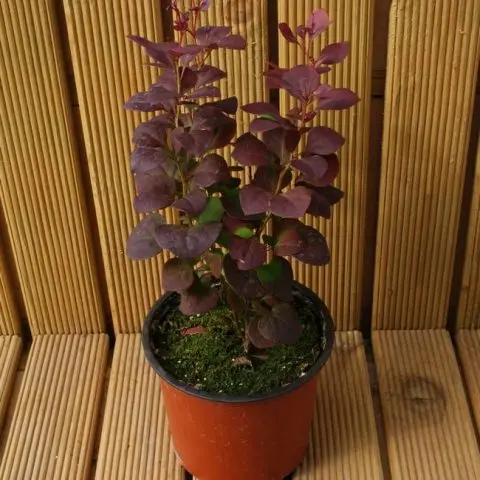
Watering and top dressing
Young bushes of whole barberry are watered under the root 1 time in 7 days. To reduce the evaporation of moisture, the trunk circle is covered with peat or old sawdust. The first time the shrub is fertilized after 2 years:
- May-June – root top dressing with a solution of urea, 10 g of fertilizer is added to a bucket (20 l) of water;
- during fruiting, the barberry is fed with potassium-phosphorus fertilizers, 10 g of superphosphate and 15 g of any fertilizer containing potassium are taken per 10 liters of water.
The indicated norm is calculated for 1 bush of barberry.
Trimming
In any variety of barberry, shoots are formed from root offspring. In the absence of pruning, the shrub loses its shape, spreads, loses its decorative qualities.
In the spring, the bushes are pruned from March to April, in the fall – from September to October:
- remove all damaged branches;
- extra shoots thickening the crown;
- part of the young shoots.
Rejuvenating pruning of old bushes (10-12-year-olds) is planned for autumn. Beginner gardeners form a bush in 3 stages, they follow the simplest scheme in their work.

Barberry tolerates pruning well. It takes several years to form a crown of a certain geometric shape.

A beautiful hedge is formed from shrubs of a rectangular or trapezoidal shape.
Preparation for winter
In late autumn, the soil is cleared of leaves, other debris, and loosened. Carry out the last watering. The soil is mulched with black soil, peat, spruce branches (layer thickness no more than 12 cm). Make sure that the root neck is sprinkled.
Young seedlings planted in autumn are covered with covering material for the winter. Adult bushes in the Moscow region hibernate without shelter. In Siberia and the Urals, bushes of any age are covered with lutrasil.
Reproduction
Berberis integerrima is propagated vegetatively (cuttings, dividing the bush, layering) and seeds. It is difficult to divide a whole barberry bush, the plant may die, so this method is rarely used in practice.

Beginners prefer to propagate whole-edge barberry by layering. In the spring, the soil in the trunk circle is loosened. Next to the one-year-old, lignified shoot, they dig a shallow trench in the course of growth. The selected branch is placed in it, pinned with a wire bracket, sprinkled with earth mixed with humus. By autumn, roots will appear, a year later, in spring, the seedlings are ready for transplanting to a permanent place in the garden.
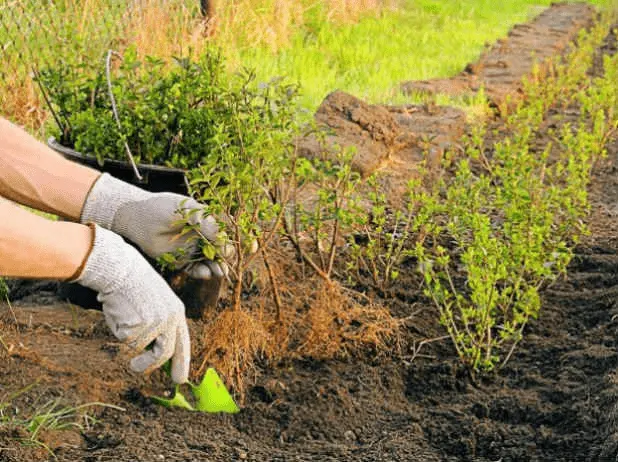
Propagation by cuttings takes time and constant monitoring. The branches are cut into annuals 10-15 cm long. Rooted in a mixture of peat and sand.
The seed method is simple. Ripe berries are needed for reproduction of the whole barberry. Bones are taken out of them, they are washed in a solution of manganese. It is better to plant seeds in autumn. In winter, they will undergo a natural stratification. They will sprout in the spring.
Diseases and pests
Whole barberry bushes rarely suffer from diseases. They are caused by unfavorable weather conditions. Stems and leaves are affected by the fungus microsphere, it causes powdery mildew. A white bloom resembling flour appears on diseased leaves.
Without treatment, the bush may die from rust. Orange spots on the leaves are its first symptoms. Another disease that weakens the shrub, reduces its winter hardiness, is caused by various pathogens – this is spotting. Her symptoms:
- spots of arbitrary shape appear on the leaves;
- dried young shoots are noted.
Aphids attack barberry bushes in unfavorable years. Special preparations are used to cure a diseased bush from an infection, to destroy pests. During the summer, the bushes are sprayed with insecticides (fungicides) at least 3 times.

Conclusion
Whole-edged barberry will decorate the garden plot, make the garden more picturesque. The Berberis integerrima hedge will purify the air, protect the yard from dust, noise, prying eyes.
Even more information is available in the video on how to plant a barberry in the fall:










